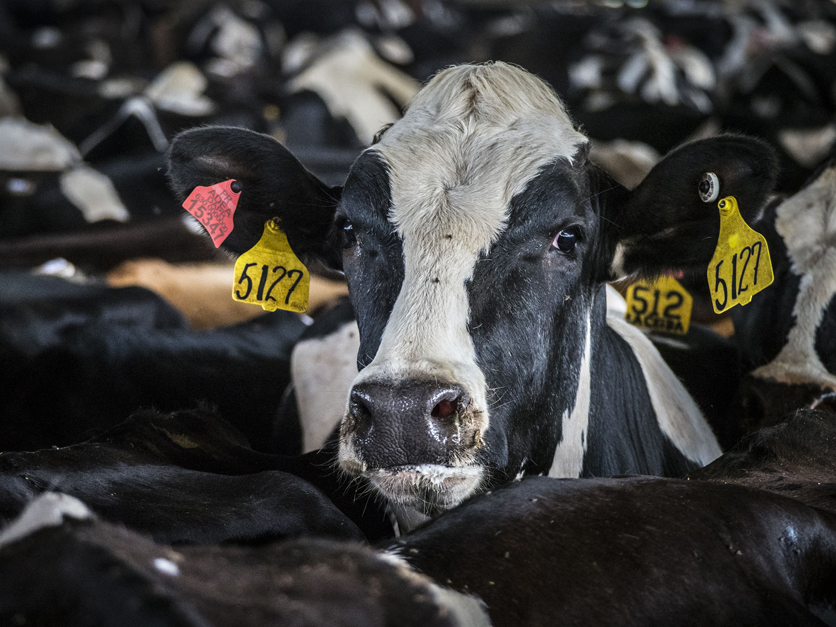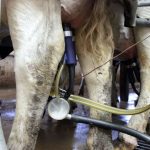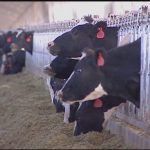
“With dairy farmers going out of business daily in the upper Midwest, it’s really critical you prioritize the signup for this program and get it up and running as soon as possible,” Steve Etka, coordinator of the Midwest Dairy Coalition, said of the farm bill’s Dairy Margin Coverage program.
The 2018 farm bill overhauled the former Margin Protection Program, renaming it DMC and raising the maximum coverage level from $8 to $9.50 per hundredweight for the first 5 million pounds of production. Producers can also get rebates for a portion of the premiums they paid for MPP.
Etka was among about 50 representatives of various organizations who provided comments to the Farm Service Agency, Risk Management Agency and Natural Resources Conservation Service on Tuesday on how the farm bill should be implemented. Major commodity groups didn’t appear at the meeting with the exception of the National Cotton Council and the National Milk Producers Federation.
The agency officials offered introductory remarks but offered few details on how the implementation process is proceeding and didn’t respond to the comments.
FSA Administrator Richard Fordyce said his agency had completed its side-by-side comparisons of the new law with the 2014 farm bill and was bringing teams of field staff to work on individual provisions.
“It’s highly critical that we understand how these policies affect producers, affect their communities,” said RMA Administrator Martin Barbre, arguing the economic health of some local communities depends on whether farmers can get adequate crop insurance.
Some speakers raised concerns about the adequacy of the workforces at FSA and NRCS to implement the programs, and Bill Northey, undersecretary for farm production and conservation, acknowledged the concern. “We are struggling to be able to get fully staffed in all of our offices,” he said. He stopped short of saying whether the staff shortage would impede farmer services or farm bill implementation.
None of the changes in the farm bill were presented as more urgent than Dairy Margin Coverage.
Paul Bleiberg of the National Milk Producers Federation urged FSA officials to consider using multiple ways to contact farmers to let them know about the DMC program. The agency should “cast as wide a net as possible,” Bleiberg said.
Producers specifically need to know as soon as possible about the rebate option, he said. Producers can get a cash refund of half of the MPP premiums they paid or they can elect to take a 75 percent credit to offset the DMC fees that they will owe.
He said the cash assistance is critical to some farmers. “There may be producers who are hanging on right now but three or four months from now they may not be able to hang on any longer,” he said.
Northey said in a recent Agri-Pulse interview that he is aware dairy producers need the DMC implemented urgently.
Here is a look at other issues raised at the listening session:
Conservation programs – Wildlife groups urged FSA to schedule a general signup for the Conservation Reserve Program before fiscal 2019 ends Sept. 30. About 22.5 million acres are currently enrolled in CRP, 1.5 million acres below the legal cap this year, and contracts enrolling another 1.6 million acres are scheduled to expire Sept. 30.
“We risk being as much as 3 million acres under the cap without having a FY19 signup,” said Aviva Glaser, director of agriculture policy for the National Wildlife Federation.
Going forward, FSA should seek to keep CRP enrollment as close as possible to the limits set by the 2018 farm bill, which raises the cap to 27 million acres by 2023, said Kellis Moss, director of public policy for Ducks Unlimited.
Erik Kamrath of the Union of Concerned Scientists said NRCS should ensure that the Conservation Stewardship Program is promoted as vigorously to farmers as the Environmental Quality Incentives Programs. EQIP subsidizes the cost of equipment and practices, while CSP provides annual payments to producers who undertake conservation practices.
NRCS should “encourage farmers to use EQIP as a stepping stone for CSP funding,” said Kamrath.
Cover crops – Representatives of conservation groups and the National Sustainable Agriculture Coalition urged RMA officials to provide as much flexibility as possible to farmers as to when they have to terminate cover crops and still maintain crop insurance coverage.
Lara Bryant of the Natural Resources Defense Council said her group would be providing RMA written examples of farmers who have had problems with RMA’s existing cover crop policy. She said a grower in western Iowa said that farmers there should be allowed to grow their rye cover longer.
Ferd Hoefner, senior strategic adviser to the National Sustainable Agriculture Coalition, said more broadly that no farmers should lose crop insurance if they are following practices approved by NRCS.
Minority farmers – The farm bill includes provisions intended to assist people, often African Americans in the South, who own “heirs’ property,” land handed down in a family without clear title, making it hard for them to get loans and government assistance. Under the bill, the property owners can qualify for a USDA farm number that will allow them to get crop insurance, farm loans and disaster assistance.
The farm bill “will allow farmers to create more viability on their farms and become more economically sustainable,” said Monica Range, director of land retention and advocacy for the Federation of Southern Cooperatives.
Other speakers, including Juli Obudzinski of the National Sustainable Agriculture Coalition, urged FSA to impose stricter reporting requirements on lenders who receive USDA guarantees to show how well they are reaching underserved communities.























